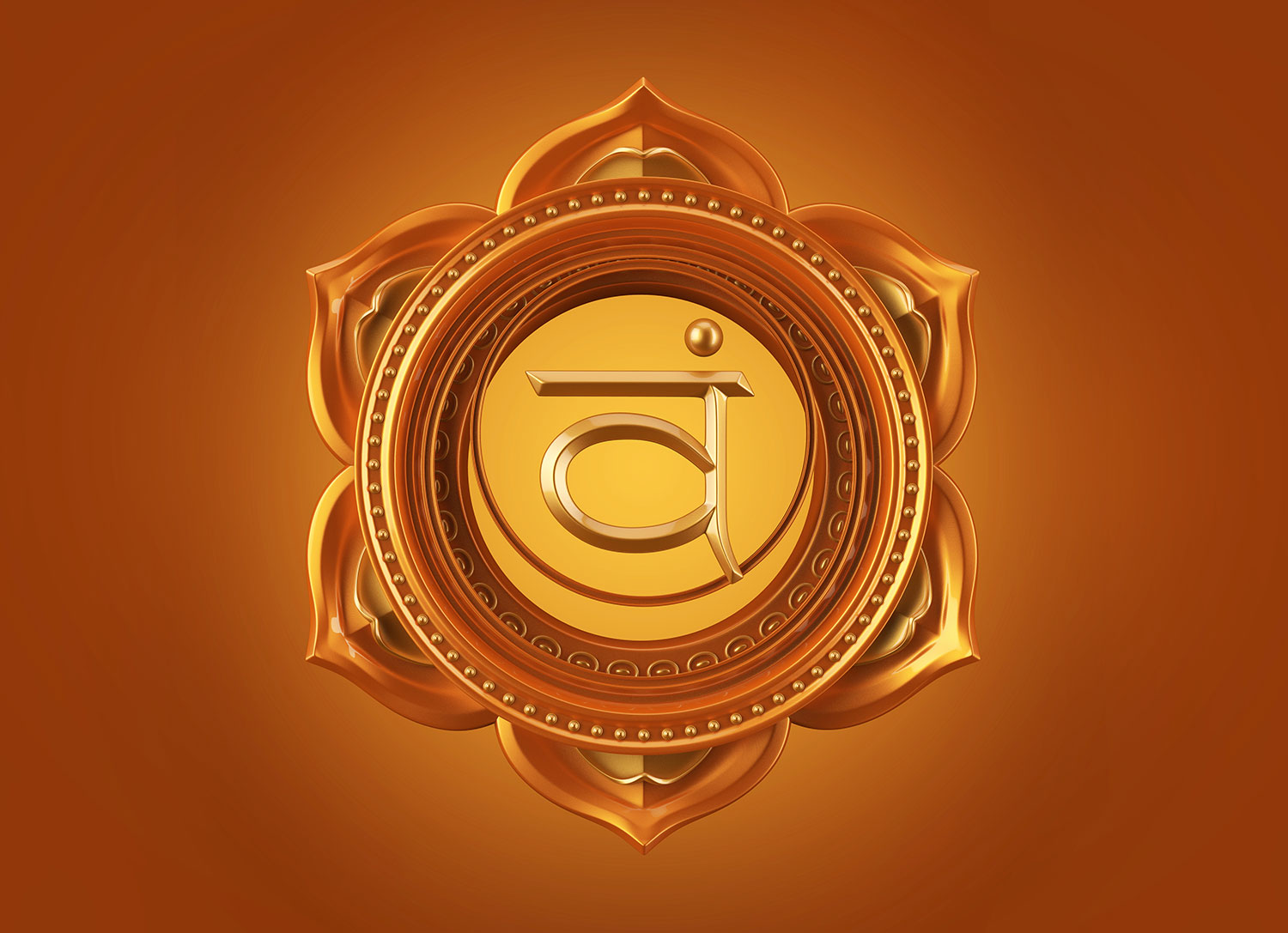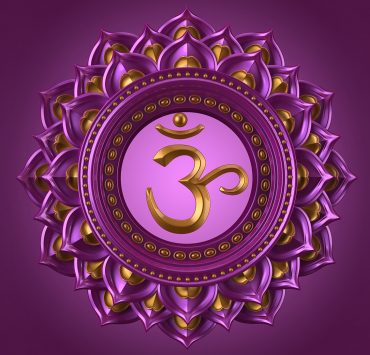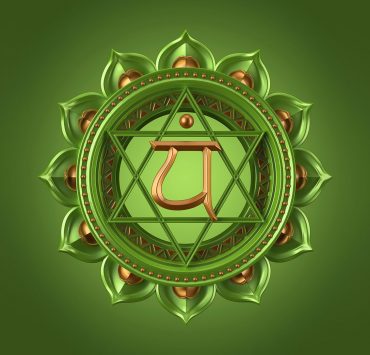
Susan views the world through a lens of spirituality, health,…
The Svadhisthana Chakra is often described as the chakra that governs your sexual urges and desire for pleasure. But this is an oversimplification of the energies that resonate in this area of the subtle anatomy of the human body.
Not only does Svadhisthana deal with sensuality and sexuality, but also with creativity and our ability to create life and art with passion.
When in alignment, this chakra allows us to accept ourselves for everything we are.
The Chakras and the Subtle Body

Modern yoga classes place much emphasis on the physical benefits of yoga for health and fitness. But yoga not only deals with the gross body – or the physical body that can be seen, felt, and touched – but also the subtle or energetic body.
The chakras are energy centers located in the energetic body. Some systems count as many as 72,000 chakras, but most people are most familiar with the seven major chakras located along the central channel, on the spinal column.
When energy flows freely through these centers, we feel balanced, powerful, creative, and healthy.
Each chakra is associated different energies. Here are the 7 major chakras and the quality of energy that they resonate with.
— Muladhara Chakra. Root – basic needs for survival, grounding, and trust.
— Svadhisthana Chakra. Sacra – sensuality, creation, and reproduction
— Manipura Chakra. Solar Plexus – action and confidence
— Anahatha Chakra. Heart – compassion, empathy, and love
— Visuddha Chakra. Throat – expression, clarity, and truth
— Ajna Chakra. Third Eye – intuition and non-duality
— Sahasrara Chakra. Crown – transcendence
Svadhisthana Chakra – The Seat of the Self

The Svadhisthana chakra, also called the sacral chakra, is the second energy center and it is located around two fingers above your perineum. As the second chakra, it is the energy center that brings us a step above our basic animalistic needs governed by Muladhara chakra.
The Sanskrit name of this energy center translates at “seat of the self.” When this chakra is balanced and aligned, sensuality and creativity flow freely. The energy of reproduction and creation reside here, but this does not only refer to literal reproduction by conceiving and birthing a child.
This can also refer to the birth of a new endeavour in life, a project, or idea.
Each chakra is associated with a colour, element, and bija mantra, or seed sound which helps us to focus and meditate on that particular energy center. For Svadhisthana chakra, these are as follows:
— Bija mantra: Vam
— Color: Traditional – Silver; Modern – Orange
— Element: Water
What Happens When this Chakra is not Balanced?
Svadhisthana chakra may become blocked when we deny our natural urges to take pleasure in our own sensuality or when we are conditioned to feel guilt over our natural sex drive.
Blocks may be overcome by allowing yourself to forgive yourself for any guilt or shame associated with your sexuality. By accepting yourself for you you are, you may come back into alignment with this seat or yourself.
An overactive Svadhisthana chakra on the other side of the scale may manifest as an unhealthy addiction to sex, over-attachment and dependence on others, and a tendency to be over dramatic and emotional.
These imbalances may lead to physical illnesses such as reproductive issues, cancer – especially in the uterus, breasts, or prostate – and issues with digestion and body elimination.
Many practices exist to help bring this chakra back into alignment. These may include colour therapy, sound therapy, crystal healing, art therapy, play therapy, and even certain yoga asana may help bring the energies in this center back into balance and flow.
Yoga Asana to focus on Svadhisthana Chakra
Cat-Cows

Cat and Cow vinyasas help with spinal mobility. Starting each movement with emphasis on your tail bone will help you bring your awareness to your hips, sacrum, and lower abdomen.
Step-by-Step:
— Position yourself on all-fours on your mat. Align your knees beneath your hips and your wrists beneath your shoulders to create a box shape with your body. Look forward with a neutral spine.
— Inhale and begin the movement by pointing your tailbone upwards. Follow the natural curve of your spine to relax your belly towards the floor, roll your shoulder blades together, push your heart forwards to expand your chest, and gently took upwards without compressing your cervical spine. Hold your breath and pause in this position for a moment.
— As you exhale, begin the movement with your tailbone again, this time pointing it downwards. Follow the movement of your spine by pulling in your navel towards your back body, rolling your shoulders forward and imagining your heart being pulled upwards towards the sky. Relax your neck and allow your head to hang at the end of the movement and breath. Hold and pause the asana here.
— Continue moving your spine in this way with every inhale and exhale for a few round. When you are finished, end the vinyasa on an exhale and bring your spine back to a neutral position.
Anjaneyasana aka Low Lunge Pose

Low lunges are deep hip openers which also stretch out your lower abdomen. Adjust the depth of the stretch by placing your hands on the floor for support of lifting them over your head for a more active, intense pose.
Step-by-Step:
— Transition into Downward Facing Dog by going into an all-fours position on your mat and push your hips back and up.
— Step your right foot forward in-between your hands and align your heel below your knee. Lower your left knee to the ground (use padding if needed to protect your kneecap). Slide your left foot back while keeping your right knee in place.
— You should feel a comfortable stretch in your groin and left thigh.
Utkata Konasana aka Goddess Pose

Goddess Pose opens and strengthens your hips and groin area and also stimulates the uro-genital system.
Step-by-Step:
— From Tadasana, or Mountain Pose, turn to face the long side of your mat and place your feet around 3 feet wide.
— Turn your toes out 45 degrees and bend your knees over your toes to squat half-way. At the same time, bring your arms straight out horizontally and bend your elbows to a 90-degree angle with your palms facing towards your head or forward.
— Keep your chest expanded, knees pulled back to prevent from collapsing forward, and look forward with your chin parallel to the floor.
Malasana aka Full Yogic Squat

Some find this full squat asana a bit of a challenge but this mild hip opener stimulates your metabolism while giving your groin and hips a good stretch.
Step-by-Step:
— Start by standing in Tadasana. Position your feet slightly wider than your hips with your toes pointing forward. Bent your knees to squat down as far as you can. If your heels begin to lift off the ground, either stop your squat where you can still keep them flat, or place a rolled towel under your heels for stability.
— If it’s more comfortable, you may also point your toes at a slight 45-degree angle outwards.
— Keep your knees wide and use your elbows to push and hold them open. Place your palms together in front of your chest in a prayer position or Namaskar mudra.
— Lengthen your spine and keep your chest expanded for ease of breath.
What's Your Reaction?
Susan views the world through a lens of spirituality, health, and compassion. Her positive outlook on life shines through her writing, which is heavily focused on yogic living, meditation, and conscious eating.














